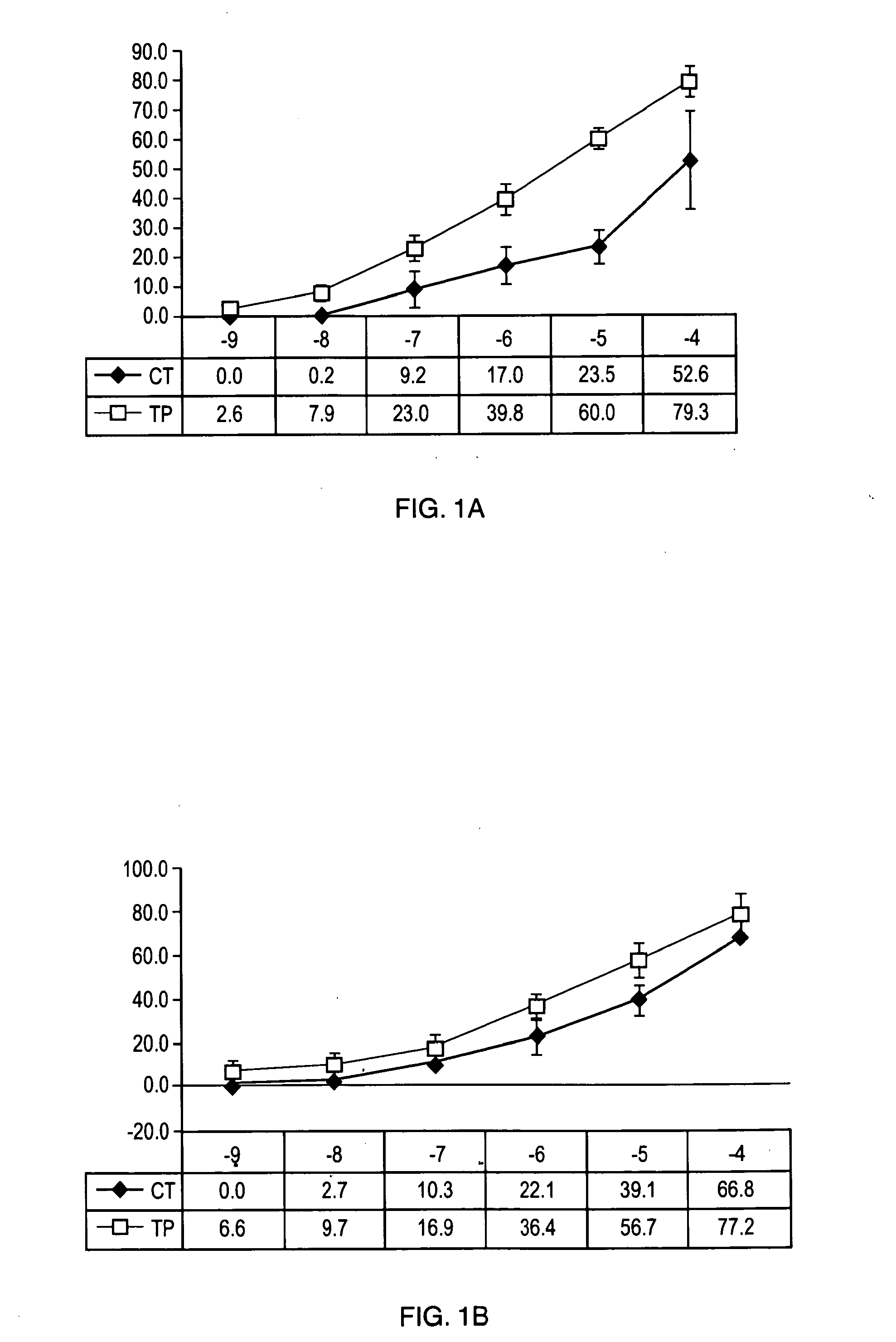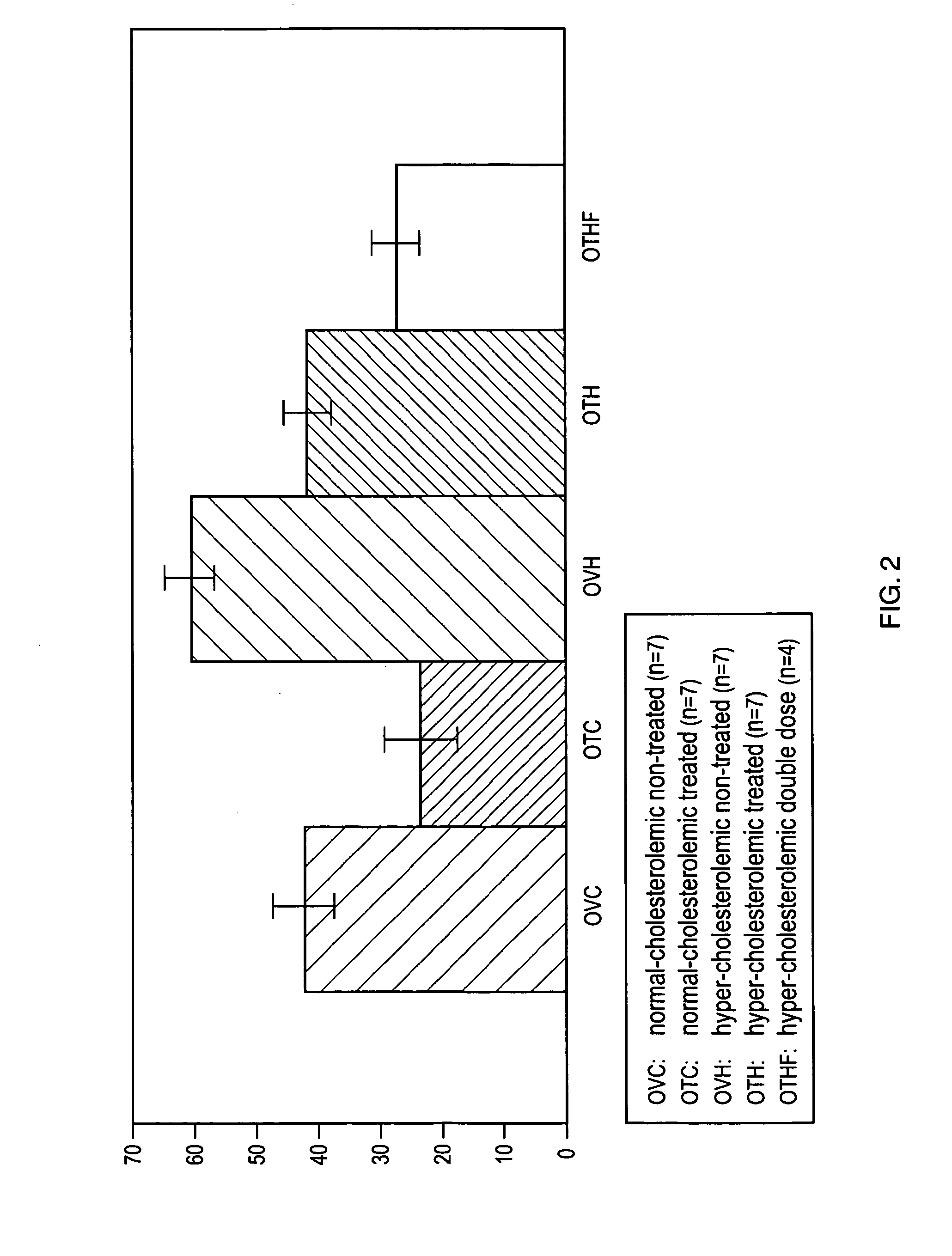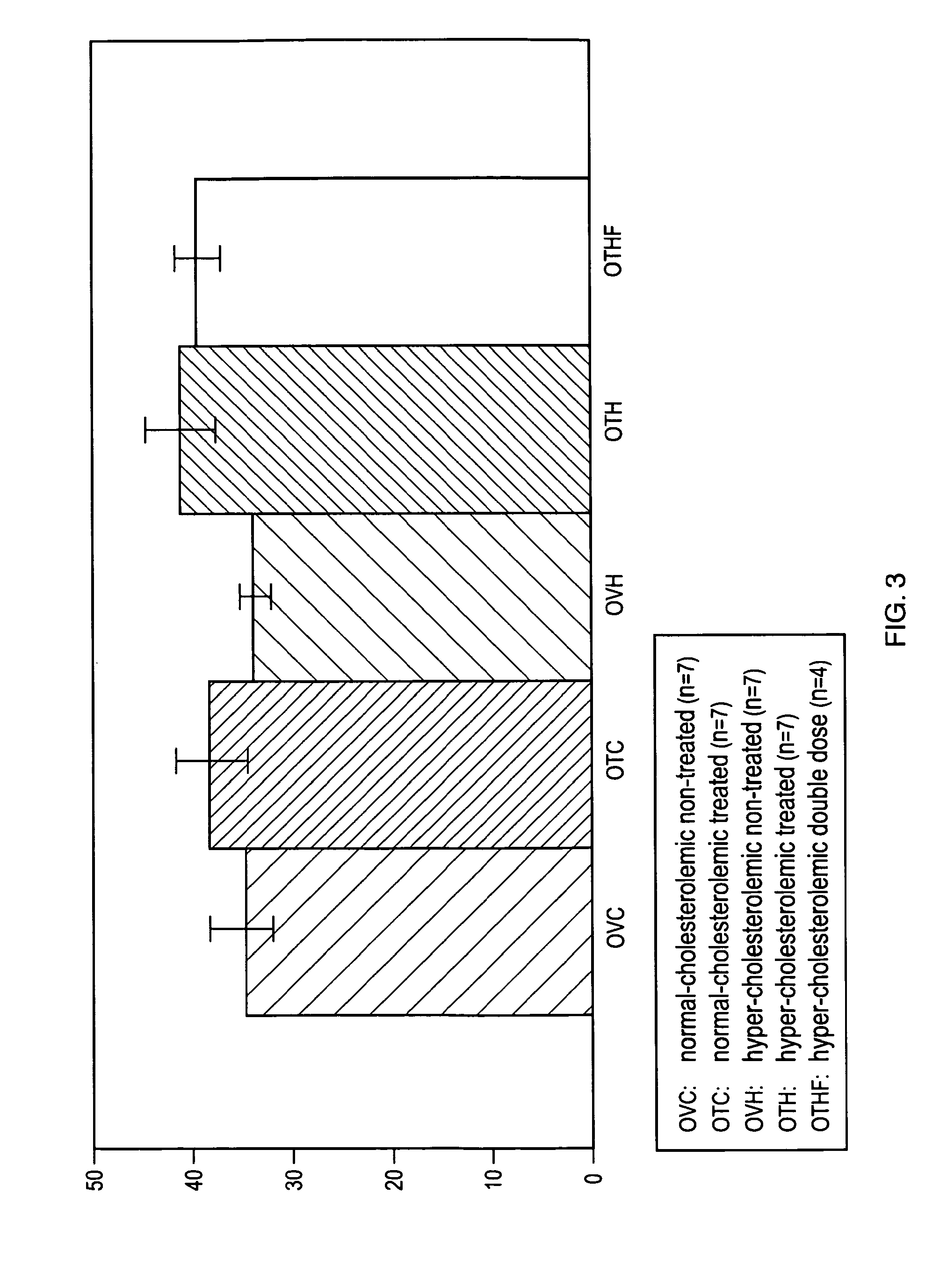Methods for treating acute myocardial infarction
a myocardial infarction and acute treatment technology, applied in the field of acute treatment of myocardial infarction, can solve the problems of cardiac tissue cellular damage, patient usually short of breath, sweating, nauseous, etc., and achieve the effect of limiting damage to myocardial tissues
- Summary
- Abstract
- Description
- Claims
- Application Information
AI Technical Summary
Benefits of technology
Problems solved by technology
Method used
Image
Examples
example 1
I. Experimental Procedures
[0084]Hypercholesterolemic Yucatan miniswine were divided randomly into three treatment groups. These groups were: (1) placebo (n=5-10) (2) low dose TP508 treatment (n=6-10) and (3) high dose TP508 treatment (n=4). All animals were subjected to regional left ventricular (LV) ischemia by left anterior descending (LAD) arterial occlusion distal to the second diagonal branch for 60 minutes. The treatment groups received an intravenous (IV) bolus dose of either placebo or TP508 10 minutes prior to the onset of reperfusion, followed by a constant IV infusion of TP508 or vehicle for the remainder of the experiment. The myocardium was reperfused for 120 minutes following ischemia. Arterial blood gas (ABG), arterial blood pressure, hematocrit (Hct), LV pressure, heart rate (HR), EKG / ECG, O2 saturation, core temperature, and intravenous fluid requirements were measured and recorded. Myocardial segmental shortening in the long axis (parallel to the LAD) and short-axi...
example 2
I. Experimental Procedures
[0105]To determine the effect of TP508 on infarct size in a normocholesterolemic (NC) porcine model of acute myocardial infarction, NC Yucatan miniswine which weighed approximately 25 kg and were on a normal diet of regular chow were divided randomly into two groups. These groups were: (1) placebo (n=7) and (2) TP508 treatment (n=7). All fourteen (14) animals were subjected to regional left ventricular (LV) ischemia by left anterior descending (LAD) arterial occlusion distal to the second diagonal branch for 60 minutes and to reperfusion for 120 minutes immediately following the arterial occlusion. The two groups received an intravenous (IV) bolus dose of either placebo (NC-control; saline) or 0.5 mg / kg of TP508 (NC-TP508) for 10 minutes prior to the onset of reperfusion. The two groups were subject to a constant IV infusion of placebo (NC-control; saline) or 1.25 mg / kg / hr of TP508 (NC-TP508) for the entire 120-minute reperfusion period.
[0106]The experiment...
example 3
I. Experimental Procedures
[0108]To determine the effects of TP508 and TP508 dimer on infarct size in a hypercholesterolemic (HC) porcine model of acute myocardial infarction, HC Yucatan miniswine were fed a high cholesterol diet of 4% cholesterol, 17.2% coconut oil, 2.3% corn oil, 1.5% sodium cholate and 75% regular chow, starting at 7 weeks of age and continuing throughout the entire study period. HC Yucatan miniswine weighing approximately 25 kg were divided randomly into five groups, each of which consisted of seven (7) pigs (n=7). These groups were: (1) placebo (HC-Control; n=7); (2) TP508 treatment with an intravenous bolus dose of 0.05 mg / kg and an infusion dose of 0.125 mg / kg / hr (HC-TP508 Dose 0.1×; n=7); (3) TP508 treatment with an intravenous bolus dose of 0.5 mg / kg and an infusion dose of 1.25 mg / kg / hr (HC-TP508 Dose 1×; n=7); (4) TP508 treatment with an intravenous bolus dose of 1.0 mg / kg and an infusion dose of 2.50 mg / kg / hr (HC-TP508 Dose 2×; n=7); and (5) TP508 dimer t...
PUM
| Property | Measurement | Unit |
|---|---|---|
| time | aaaaa | aaaaa |
| time | aaaaa | aaaaa |
| time | aaaaa | aaaaa |
Abstract
Description
Claims
Application Information
 Login to View More
Login to View More - R&D
- Intellectual Property
- Life Sciences
- Materials
- Tech Scout
- Unparalleled Data Quality
- Higher Quality Content
- 60% Fewer Hallucinations
Browse by: Latest US Patents, China's latest patents, Technical Efficacy Thesaurus, Application Domain, Technology Topic, Popular Technical Reports.
© 2025 PatSnap. All rights reserved.Legal|Privacy policy|Modern Slavery Act Transparency Statement|Sitemap|About US| Contact US: help@patsnap.com



